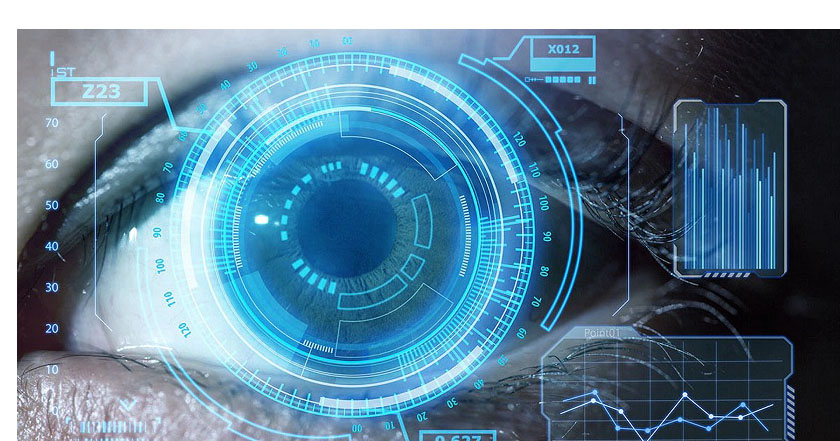Introduction: The Future of Computer Vision in 2024
Computer vision, a field of artificial intelligence (AI) that enables machines to interpret and make decisions based on visual data, has rapidly evolved over the past few years. As we approach 2024, the landscape of computer vision is set to transform even further, driven by advancements in technology, innovative applications, and emerging ethical concerns. This article explores the current state of computer vision, the breakthroughs expected in 2024, and the social implications of these developments.

The Current State of Computer Vision
Computer vision has come a long way since its inception, with significant progress in areas such as image recognition, object detection, and facial recognition. Today, it powers a wide range of applications, from autonomous vehicles and smart cameras to medical diagnostics and retail analytics. The core technologies underpinning these applications include deep learning algorithms, convolutional neural networks (CNNs), and large annotated datasets that enable machines to “see” and understand the world around them.
In recent years, the integration of computer vision with other AI technologies, such as natural language processing (NLP) and reinforcement learning, has expanded its capabilities. This synergy allows for more sophisticated systems that can understand context, infer meaning, and make decisions based on visual and textual data. As a result, computer vision has become a crucial component in areas such as robotics, augmented reality (AR), and human-computer interaction.
Anticipated Advancements in 2024
As we look forward to 2024, several key advancements are expected to shape the future of computer vision:
- Enhanced Accuracy and Speed: Continued improvements in algorithm design and computational power will lead to more accurate and faster computer systems. This will be particularly beneficial in time-sensitive applications such as autonomous driving and real-time video analytics.
- Edge Computing Integration: The rise of edge computing, which involves processing data closer to where it is generated, will reduce latency and enhance the efficiency of computer vision applications. This will be crucial for scenarios where real-time analysis is essential, such as in smart cities and industrial automation.
- Multimodal AI Systems: Combining computer System with other sensory inputs, such as audio and haptic feedback, will create more robust and versatile AI systems. These systems will be able to interact more naturally with humans, understand complex environments, and perform tasks that require a multi-sensory approach.
- Improved Generalization: One of the current challenges in computer systems is the ability to generalize across different contexts and environments. In 2024, advancements in transfer learning and unsupervised learning are expected to enhance the adaptability of computer vision models, making them more reliable in diverse real-world scenarios.
- Ethical AI and Fairness: As computer systems become more integrated into everyday life, there is an increasing focus on ensuring these technologies are fair and unbiased. Researchers and developers are working on methods to detect and mitigate biases in training data and algorithms, promoting ethical AI practices.
Applications Across Industries
The advancements in computer vision are set to have profound impacts across various industries:
Healthcare
In healthcare, computer vision is being used for diagnostic imaging, patient monitoring, and even in robotic-assisted surgeries. In 2024, we can expect further integration of computer systems with AI to improve diagnostic accuracy, reduce the time required for analysis, and enhance personalized medicine approaches.
Automotive
The automotive industry continues to be a major beneficiary of computer vision advancements, particularly in the development of autonomous vehicles. By 2024, more sophisticated computer systems are expected to enhance the safety and reliability of self-driving cars, with better object detection, pedestrian recognition, and navigation capabilities.
Retail and E-commerce
In retail, computer vision is revolutionizing the shopping experience through applications like cashier-less stores, personalized marketing, and inventory management. By 2024, retailers are likely to adopt more advanced vision systems that can analyze customer behavior, optimize store layouts, and streamline logistics.
Security and Surveillance
Computer systems plays a critical role in security and surveillance, enabling automatic detection of suspicious activities and enhanced situational awareness. With advancements in AI, these systems are becoming more capable of distinguishing between benign and malicious behavior, thus improving public safety.
Ethical Considerations and Challenges
As computer system technology advances, it brings with it significant ethical considerations and challenges. Privacy concerns are paramount, especially with the increasing use of facial recognition and surveillance systems. Ensuring that these technologies are used responsibly and do not infringe on individuals’ rights is a critical issue.
Moreover, the potential for bias in computer systems remains a concern. Biases can arise from the training data used to develop these systems or from the algorithms themselves, leading to unfair treatment of certain groups. Addressing these biases requires a concerted effort from researchers, developers, and policymakers to ensure that computer vision technologies are equitable and inclusive.
Conclusion
The year 2024 promises to be a pivotal year for computer vision, with advancements poised to expand its capabilities and applications across numerous fields. As we continue to push the boundaries of what is possible, it is essential to remain vigilant about the ethical implications of these technologies. By fostering a responsible and inclusive approach to innovation, we can harness the full potential of computer systems to benefit society as a whole.
The field of data science is promising and abundant with opportunities. Data scientists play a crucial role in fostering innovation and expansion, as machine learning, big data, cloud computing, and data privacy and security continue to influence the industry.
